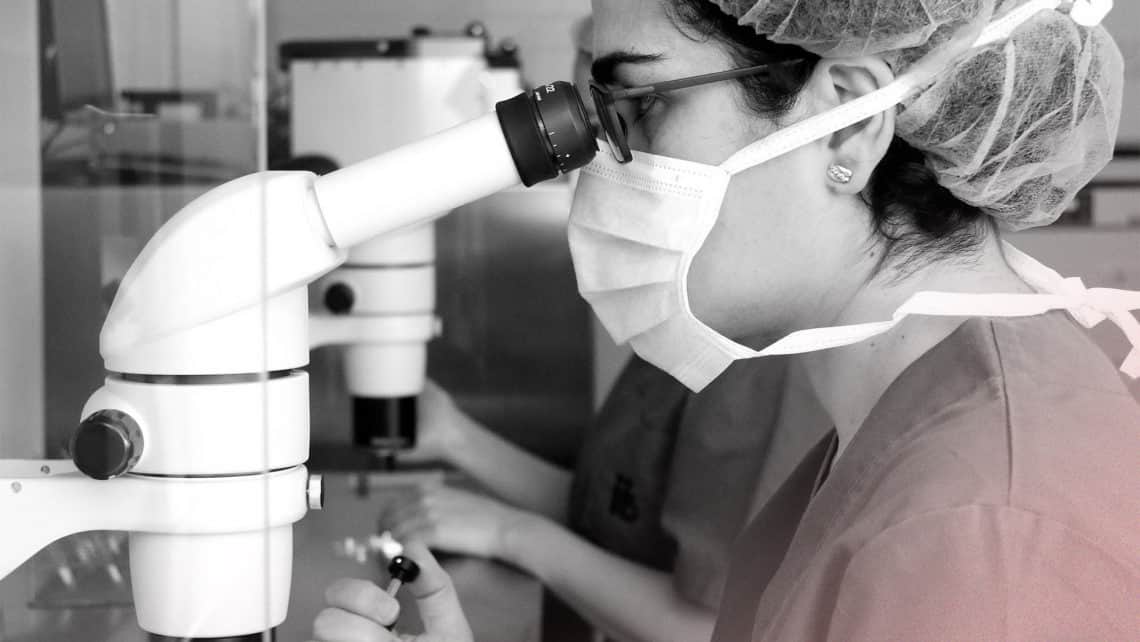
The advantages and disadvantages of transferring embryos during a natural or artificial cycle
Embryo transfer to the uterus is the pinnacle of all courses of assisted reproduction treatment. It cannot be left to chance. The endometrium needs to be receptive and facilitate embryo embedding.
The endometrium can be prepared with the aid of drugs (oestrogens) to simulate natural uterine behaviour – a substituted or artificial cycle – or transfer can be carried out whenever biologically most appropriate following ovulation – transfer during a natural cycle.
Embryo transfer is sometimes carried out during the same cycle as the one used for in vitro fertilisation. In most cases, this is a guarantee that the endometrium is also ready for transfer.
Recent lines of research have demonstrated that it is sometimes recommendable to avoid embryo transfer during that very same cycle and to freeze embryos so that they can be transferred in another cycle later on. This practice increases endometrium receptivity because there is no pharmacological interference in the endometrium from the stimulation hormones, and it improves pregnancy rates. This new practice of delaying transfer is increasingly recommended.
The endometrium will also need to be checked should cryopreserved embryos be transferred.
There are two main ways of preparing the endometrium:
Índice
1. EMBRYO TRANSFER DURING NATURAL CYCLES
This option is recommended in patients who ovulate normally (in other words, women who have regular menstrual cycles) because their ovaries are naturally capable of preparing the endometrium in the same way as they have been doing month after month in preparation for theoretical pregnancies. No hormone medication is required. One or two ultrasound scan checks are carried out from day 10 to 12 of the cycle and urine sample analyses are carried out periodically. When observation shows that the endometrium is adequately prepared, transfer is scheduled.
What are the advantages of embryo transfer during a natural cycle?
No medication is required and therefore:
- It is a good option for patients who cannot take oestrogen hormones or who do not respond well to them.
- From an emotional point of view, it is easier to cope with because medication does not need to continue into the first few months of pregnancy.
- It is financially beneficial because oestrogen tablets do not have to be purchased.
- Since it coincides with the woman’s biological cycle, it is a more natural process.
What are the disadvantages of embryo transfer during a natural cycle?
- It is only recommended in patients with regular ovarian function and cycles.
- It calls for greater patient flexibility in terms of dates so that ultrasound scans can be carried out and so that transfer can be scheduled for exactly the right time for implantation.
- The chances of having to cancel due to premature ovulation increase.
2. EMBRYO TRANSFER DURING A PHARMALOGICALLY-GENERATED CYCLE
Transfer of this kind is recommended in patients who do not ovulate, who have irregular cycles or in whom normal ovarian function is absent, although it can also be used in patients who ovulate normally.
The patient starts taking oestrogen when her period begins and an ultrasound scan is carried out 10 to 12 days later so that endometrium development can be checked. As soon as the endometrium is ready, embryo transfer is scheduled. Transfer is carried out when the patient has been taking progesterone for the same number of days as the embryo that is due to be transferred has been developing.
What are the advantages of embryo transfer during an artificial cycle?
Transfer during an artificial cycle allows for greater flexibility for the patient in terms of having ultrasound scans and scheduling transfer. Transfer itself can be moved around without this having an impact on embryo implantation.
What are the disadvantages of embryo transfer during an artificial cycle?
- More medication needs to be taken.
- It is more expensive because drugs need to purchased and taken during the first few months of pregnancy.
- It is more stressful for the patient who has to routinely take medication.
IT MAY ALSO BE OF INTEREST TO YOU
- In vitro fertilization at Instituto Bernabeu
- Embryo transfer
- Blastocyst embryo: What it is, advantages, types and classification according to its quality
- Embryonic arrest, why don’t all of my embryos develop equally?
- Embryo normal and abnormal division
- NEGATIVE IVF: Everything you need to know after a failed IVF
